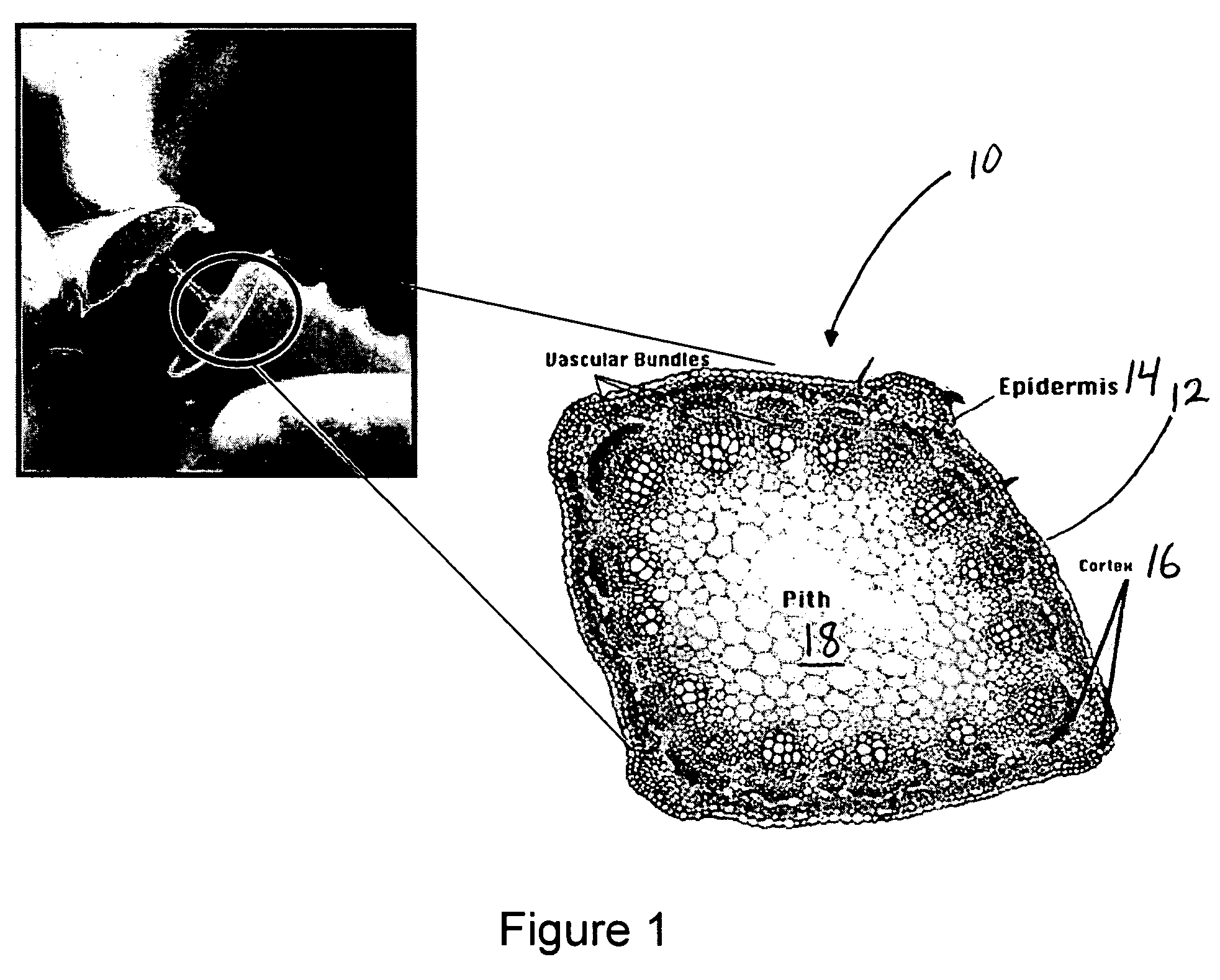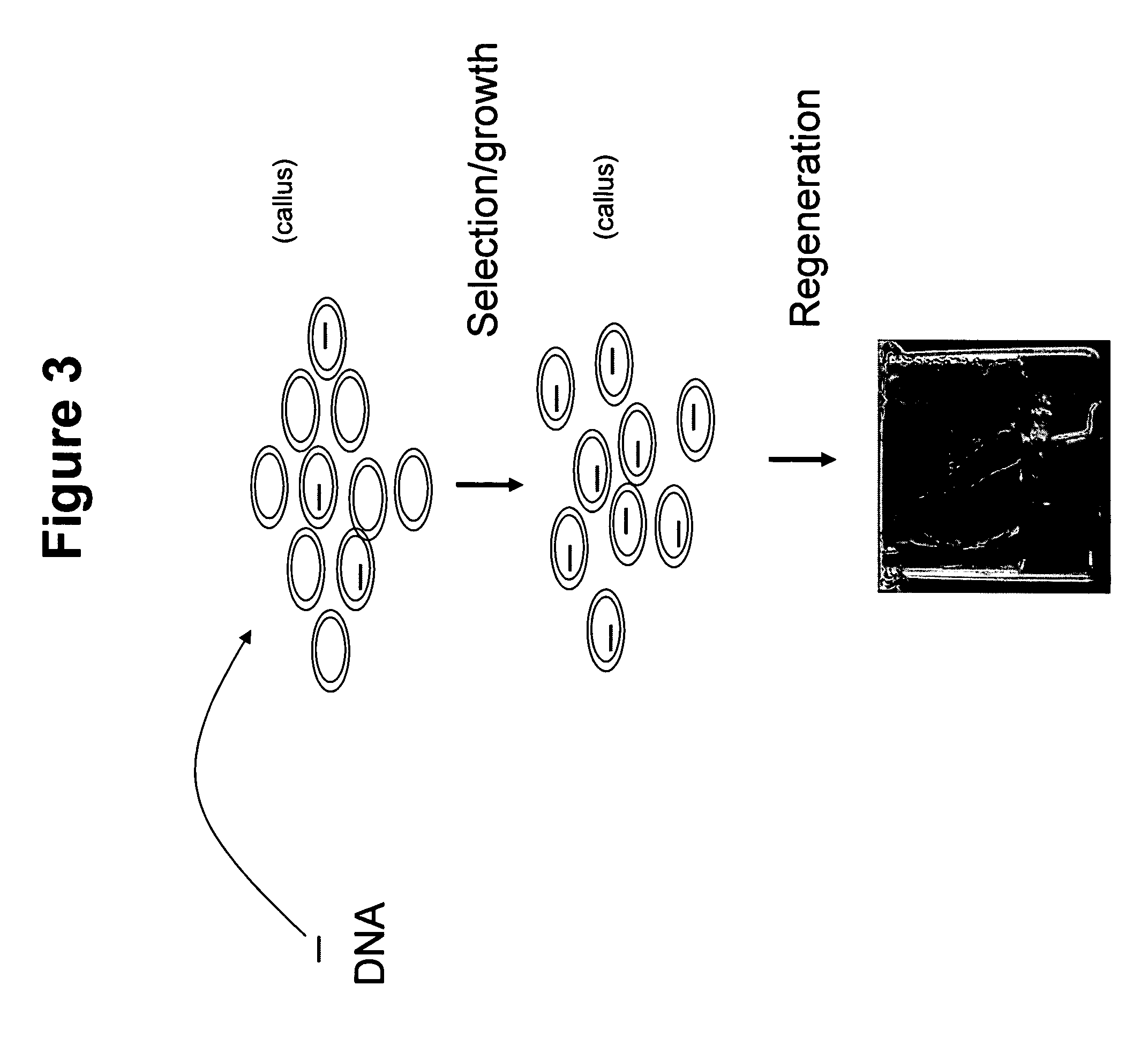Transgenic aloe plants for production of proteins and related methods
a technology of transgenic aloe and protein, applied in the field of transgenic monocot plants, can solve the problems of introducing health risks from diseases, high cost of production facilities for therapeutic proteins, and already outperforming the industry's capacity, and achieves the effects of facilitating its translocation, reducing the risk of diseases, and simplifying the removal of protein from plants
- Summary
- Abstract
- Description
- Claims
- Application Information
AI Technical Summary
Benefits of technology
Problems solved by technology
Method used
Image
Examples
examples
Methodologies for Isolation of Plant Cells
[0105]In a first example, shoot meristem tissue for direct use or for callus initiation is isolated from the stalk of the aloe, either Aloe vera, Aloe ferox or Aloe arborescence. The leaf sections are removed and the stalk is cut laterally through the longitudinal axis of the aloe leaf. Tissue is sterilized with a mixture of Tween 20 (0.05%) and hypochlorite (5%) for 10 min, followed by 30 seconds ethanol, rinse 3× sterile water. Sections are then plated with the exposed surface lying sideways to the plate in MS media with agar (0.8-1%) containing various concentrations of the growth factors, auxin and cytokinin, and 2-3% sucrose. Growth conditions vary depending on the desired process. Callus culture without shoot development is typically initiated by growing these sections in NAA (2-5 mg / L) without BAP or with low concentration of BAP (0.2 mg / L). Undifferentiated cells begin to grow along the areas of the cut stalk and can be subcultured a...
PUM
| Property | Measurement | Unit |
|---|---|---|
| diameter | aaaaa | aaaaa |
| concentration | aaaaa | aaaaa |
| concentration | aaaaa | aaaaa |
Abstract
Description
Claims
Application Information
 Login to View More
Login to View More - R&D
- Intellectual Property
- Life Sciences
- Materials
- Tech Scout
- Unparalleled Data Quality
- Higher Quality Content
- 60% Fewer Hallucinations
Browse by: Latest US Patents, China's latest patents, Technical Efficacy Thesaurus, Application Domain, Technology Topic, Popular Technical Reports.
© 2025 PatSnap. All rights reserved.Legal|Privacy policy|Modern Slavery Act Transparency Statement|Sitemap|About US| Contact US: help@patsnap.com



